
A few months ago a light bulb went off. I mostly produce oak sawdust which just happens to be one of the ideal substrates for growing mushrooms. While I love looking at mushrooms and attending lectures about mushrooms via the Los Angeles Mycological Society, I don’t know anything about growing them and my two previous attempts were complete failures.

Techniques for growing mushroom range from simple to extremely high tech. For this experiment I wanted to try the simplest method I could find that would not require buying equipment, plastic bags or maintaining a temperature and humidity controlled indoor environment. Put simply, I wanted to try growing mushrooms outdoors on oak sawdust in Southern California, a region not known for growing mushrooms.
I asked a few friends who know much more about growing mushrooms than I do. They all suggested trying oyster mushrooms since this species easily out-competes molds and other organisms that try to colonize the substrate.

I ordered a four pound bag of blue oyster grain spawn from North Spore. Following the instructions on Fresh Cap Mushroom’s YouTube channel, I poked 1/4 inch holes in the sides of a five gallon bucket and 1/8 inch holes in the bottom to drain excess water. The white oak I used mostly came out my planer and jointer, both of which produce thin chips of wood that get sucked up by my dust collector.

On January 4th, I put the chips in a plastic bin and soaked them in boiling water to pasteurize them and give the oyster mushroom spawn a better chance of growing. I let the wood chips soak overnight. The next day I squeezed excess water out of the chips and put them in my holey (holy?) bucket, alternating layers of wood chips and spawn. I placed the bucket outside under the dense shade of our avocado tree. You can also, by the way, use straw instead of wood chips.

By January 18th the oyster mushrooms were “pinning,” that is, beginning to fruit out of the 1/4 inch holes. On January 27th, I harvested my first cluster of mushrooms. I can report that blue oyster mushrooms are delicious, with a concentrated umami/super-mushroomy flavor.

One curious thing: the mushrooms I harvested look more like the Italian Oyster mushrooms that North Spore sells, so I wonder if a mix-up happened. I’ve written North Spore for a clarification. [Editors note: North Spore got back to me and they say that these are blue oyster and the the Italian oyster has a wavier cap.]

This was my third and only successful attempt at growing mushrooms. The spawn cost $28 and I’ve harvested about 2 pounds of mushrooms so I can’t call this experiment a financial success just yet, though it looks like I might get a second flush out of the bucket. Financial considerations aside, the mushrooms were so delicious that I am definitely going to try this experiment again. Towards that end I’m taking a class this month with mushroom expert Peter McCoy.

Working backwards to the more involved processes of growing your own spawn and developing your own strains is, I’m guessing, the best way to make this more sustainable. I may try growing some pink oyster mushrooms, though I’ve heard mixed reports about flavor. McCoy is sending us home with kits so I’ll report back on how those grow.
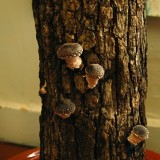
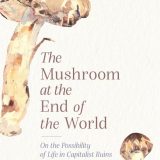
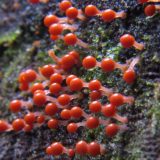
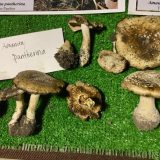
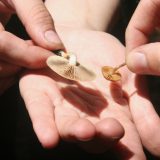
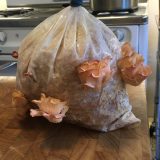
I’m guessing your “holy” bucket was actually a “holey” bucket–unless you had it blessed first!
Michael–I was trying to make a lame pun here but, as always, thanks for your much appreciated copy editing. Need to bring you on the Root Simple payroll.
So interesting! I’ve tried growing mushrooms once – fail. But you’re post has made me want to give it another try. Thanks for sharing.
OOOPs -your, not you’re
Very interesting. Thanks – I may look into your method.
Also, if you or anyone you know gardens they might love the excess wood shavings for mulch for “no dig” gardening (people buy it round here).
If it’s not contaminated, you can try using the contents from an old bucket (after it’s done flushing) to inoculate a new bucket.
Thanks Mike–I’m thinking of giving this a try. Though, unfortunate, an out of season heatwave is looming this week.
Thanks for this!
I’ve been ruminating about trying this.
I don’t have the wealth of oak sawdust but how do you think pine or alder shavings would be? How do you think chicken droppings would enhance or deter the process?
Alder shavings definitely. Chicken droppings would likely cause molds to take over which you wouldn’t want.
Different mushrooms have wood preferences. There’s a good mushroom/wood chart at https://northspore.com/blogs/the-black-trumpet/tree
Thank you both!
This is SUPER cool. And how resourceful! And yummy!
Awesome use of “waste” resources. I’ve inoculated a maple log with oyster mushrooms. Sometime in the next six months, I should know whether we’ve succeeded or not. I’ve decided to wait to see if it works before I go all in on building a bunch of logs.
Good luck! Let me know if it works–I’d like to try log inoculation at some point.